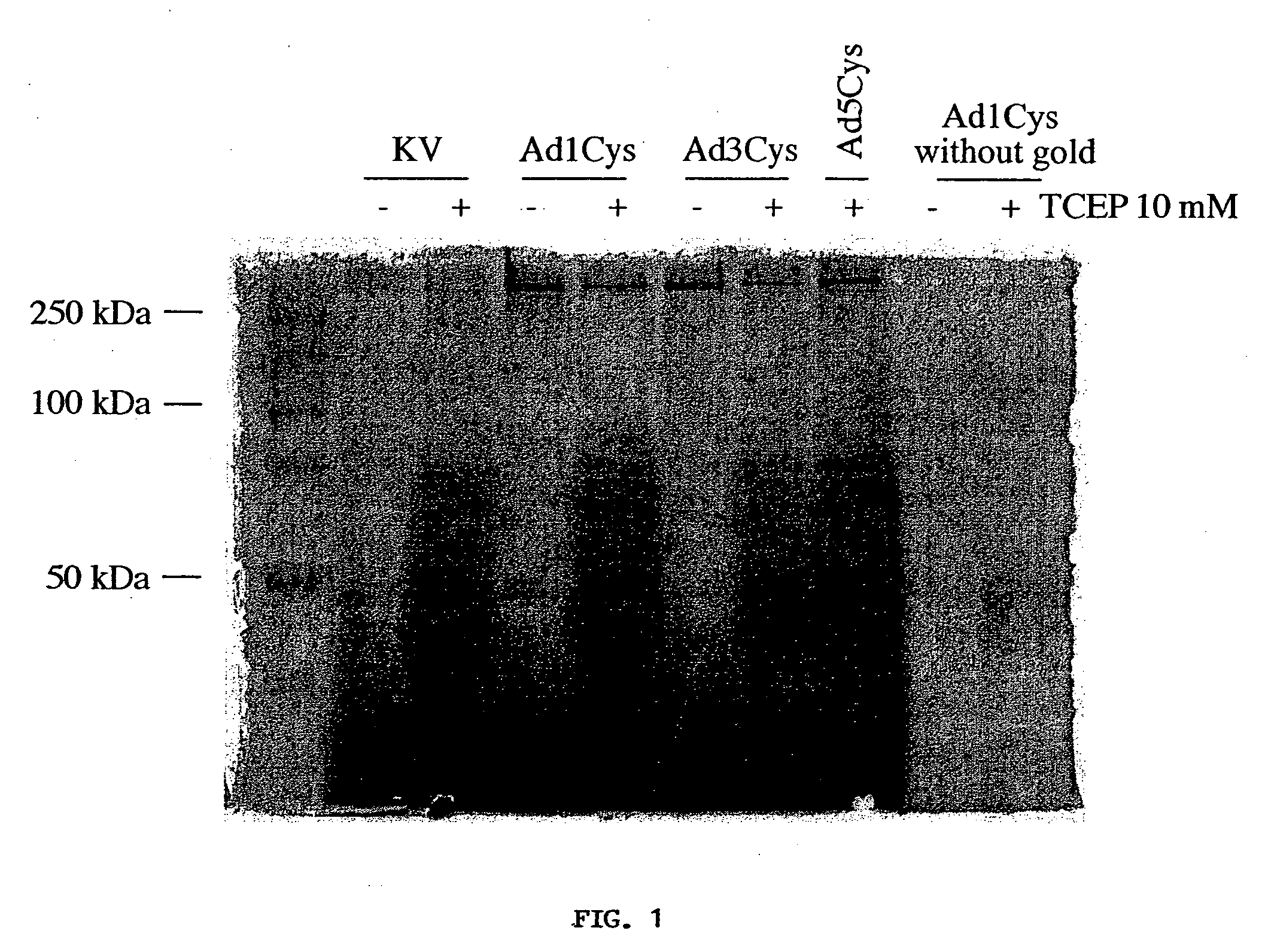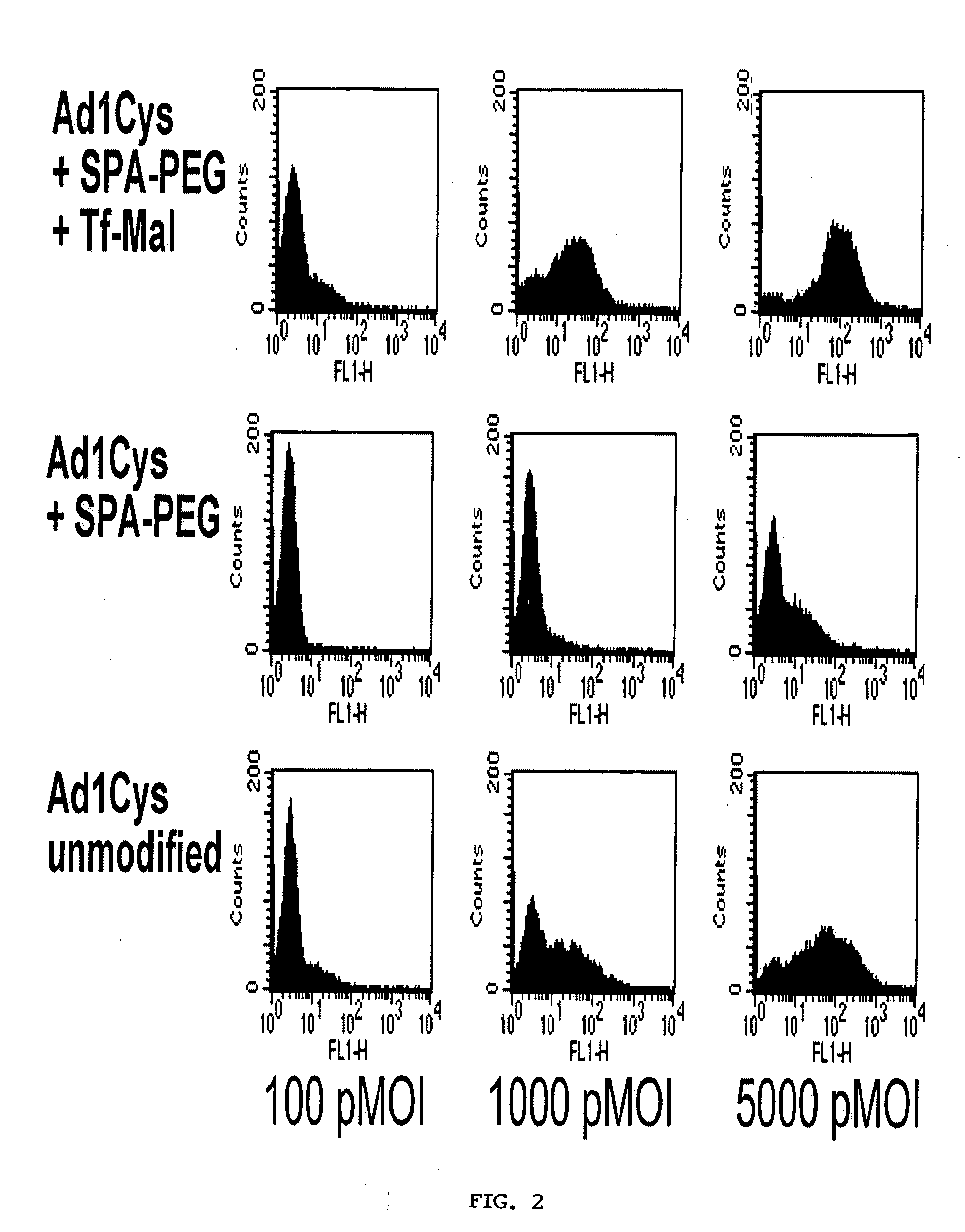Modified viral vector particles
a technology of viral vector particles and modified particles, which is applied in the field of viral vector particles, can solve the problems of affecting the treatment effect of adenovirus vectors isolated from other species, and affecting the treatment effect of adenovirus vectors
- Summary
- Abstract
- Description
- Claims
- Application Information
AI Technical Summary
Benefits of technology
Problems solved by technology
Method used
Image
Examples
Embodiment Construction
[0024] The term “vector particle” or “viral vector particle” or “virus vector particle” as used here refers to natural or artificial viral constructs for the uptake, multiplication, expression or transport of nucleic acids into cells. The term does not include any synthetically produced vector particles, i.e. particles produced without the help of cellular functions and processes going beyond the expression of capsid proteins. Examples for vector particles are viruses with a high degree of complexity such as adenoviruses, adeno-associated viruses, retroviruses, lentiviruses or baculoviruses. The vector particles are designed in such a way that they contain at least one therapeutic or analytical polynucleotide. This may be expressed and / or replicated. The vector particles can also include polynucleotide sequences that may have regulating features. Furthermore, the term vector particle can also include vector particles which are capable of lytic replication in other than production ce...
PUM
| Property | Measurement | Unit |
|---|---|---|
| Fraction | aaaaa | aaaaa |
| Fraction | aaaaa | aaaaa |
| Fraction | aaaaa | aaaaa |
Abstract
Description
Claims
Application Information
 Login to View More
Login to View More - R&D
- Intellectual Property
- Life Sciences
- Materials
- Tech Scout
- Unparalleled Data Quality
- Higher Quality Content
- 60% Fewer Hallucinations
Browse by: Latest US Patents, China's latest patents, Technical Efficacy Thesaurus, Application Domain, Technology Topic, Popular Technical Reports.
© 2025 PatSnap. All rights reserved.Legal|Privacy policy|Modern Slavery Act Transparency Statement|Sitemap|About US| Contact US: help@patsnap.com


